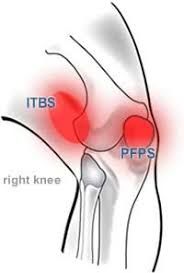"Runner's knee is the common term used to describe any condition that produces pain around the knee cap (patella). As the name suggests, running is a common cause of Runner's Knee, but can commonly affect sportspeople, triathletes and hikers and walkers.
Runner's knee or "patellofemoral pain syndrome" (PFPS), is characterised by pain at the front of the knee, around and under the kneecap (patella). The pain is normally dull, achy and can be painful with:
- Running
- Walking
- Going up/down stairs
- Squatting
- Sitting for a long time with the knee bent
- Kneeling
PFPS occurs when nerves sense pain in the soft tissues and bone under the kneecap. It may involve the breakdown of cartilage on the under-surface of the kneecap, leading to inflammation of the synovial lining and bone. This causes swelling and pain with movement and compression of the knee cap during the above activities.
In many cases, PFPS can be classed as an "overuse" or repetitive stress injury caused by training errors (e.g. an acute spike in training load or change in running surface) and can be linked to biomechanical errors (e.g. weakness in the hip or leg muscles and stride length/cadence).
It is important to differentiate PFPS from other running related conditions such as iliotibial band friction syndrome (ITBFS), as the management plan and rehab will be different.
ITBFS is also a common knee injury that can affect runners which can be characterised by pain on the outside or lateral surface of the knee.
It is caused by repeated friction or compression of the lateral structures of the knee by the IT band, which is a thick tendon-like structure on the side of the thigh and knee. The hotspot is definitively on the outside of the knee, although there can be other areas of pain associated with it.
Though management of PFPS and ITBFS can vary when directing your rehab plan or re-training (e.g. a slower pace is a risk factor for ITBFS whereas it is not likely a factor in PFPS), both injuries should be cautioned as chronicity is very common. It's important to change your training routine which may involve switching to low-impact activities which will place less stress on the knee joint. The sooner the pain is eliminated, the sooner the irritated structures will heal, which in turn will improve muscle strength and activation.
See your physio today to help diagnose your injury and guide you with your runner's knee!

